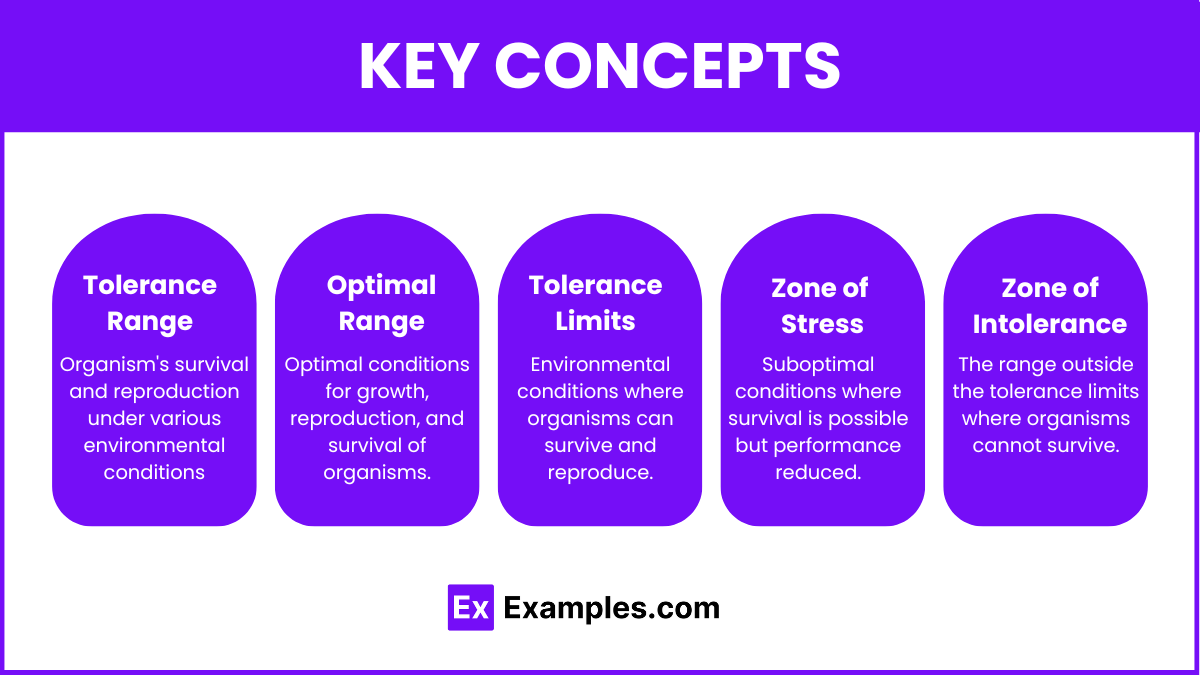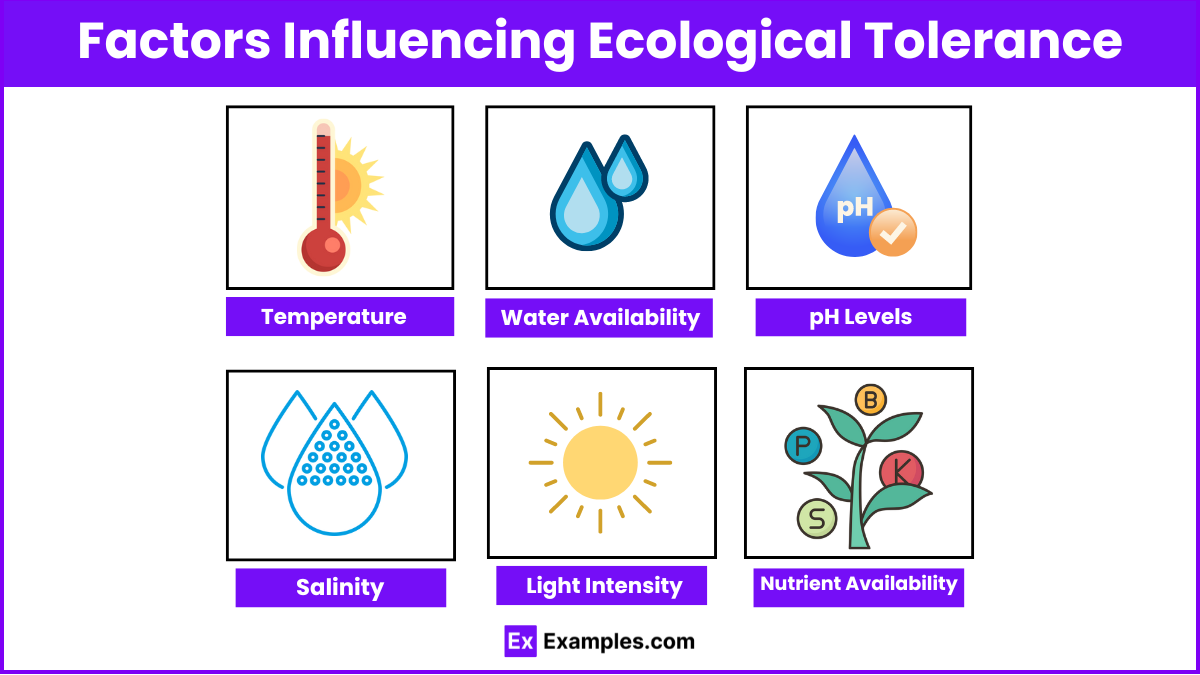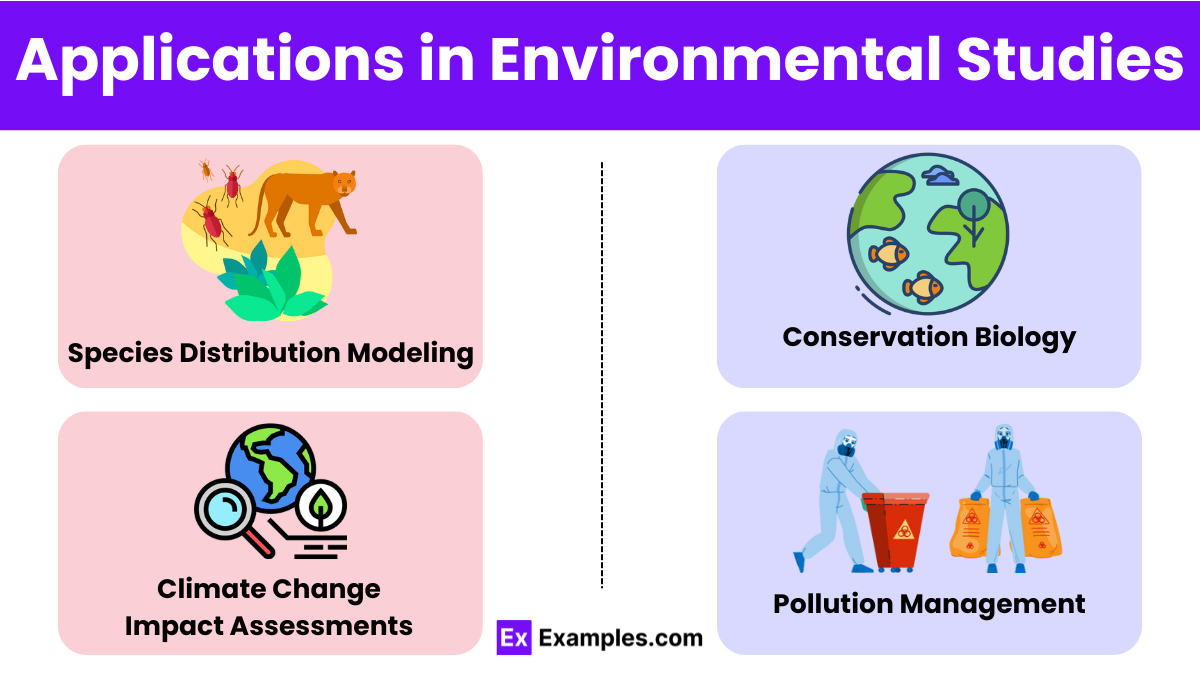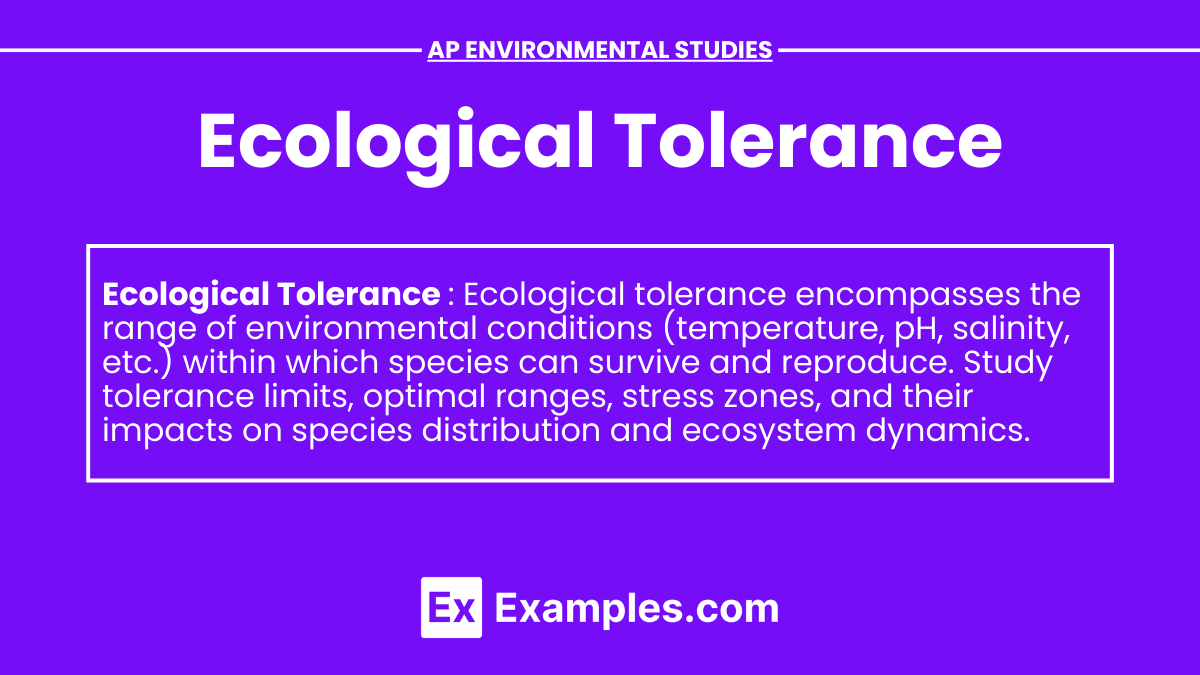Ecological tolerance refers to an organism’s ability to endure fluctuations in environmental conditions such as temperature, humidity, pH, salinity, and more, without significant negative effects on its physiology or survival. This concept is crucial in understanding species’ distributions and their responses to environmental changes, both natural and anthropogenic. Tolerance ranges vary among species, influencing their habitat preferences and ecological niches. By studying ecological tolerance, ecologists gain insights into species’ adaptations, ecosystem dynamics, and the potential impacts of environmental disturbances on biodiversity and community structure.
Learning Objectives
Learning objectives for ecological tolerance involve understanding how organisms adapt to environmental variability, identifying factors influencing tolerance ranges (like physiological limits and acclimation abilities), and exploring ecological implications such as species distributions and community interactions. Key objectives include analyzing tolerance limits across different environmental factors (temperature, pH, salinity), comparing strategies of generalist and specialist species, and assessing the role of tolerance in ecosystem resilience to disturbances like climate change and habitat alteration. Additionally, students should grasp how human activities impact tolerance ranges and apply knowledge to conservation efforts, habitat restoration, and sustainable resource management to mitigate ecological impacts.
Definition
Ecological tolerance refers to the range of environmental conditions that a species can endure before injury or death. Understanding ecological tolerance is crucial for studying species distribution, ecosystem dynamics, and environmental management.
Key Concepts

- Tolerance Range:
- The range of environmental conditions (temperature, humidity, pH, salinity, etc.) within which an organism can survive and reproduce.
- Outside this range, organisms experience stress, reduced fitness, or death.
- Optimal Range:
- The specific range of environmental conditions where an organism thrives the most (maximum growth, reproduction, and survival).
- Tolerance Limits:
- Upper Limit: The maximum level of an environmental factor that an organism can tolerate.
- Lower Limit: The minimum level of an environmental factor that an organism can tolerate.
- Zone of Stress:
- The range between the optimal range and the tolerance limits where organisms can survive but with reduced performance.
- Zone of Intolerance:
- The range outside the tolerance limits where organisms cannot survive.
Factors Influencing Ecological Tolerance

- Temperature:
- Affects metabolic rates, enzyme activities, and overall physiological functions.
- Ectothermic (cold-blooded) animals have narrower temperature tolerance compared to endothermic (warm-blooded) animals.
- Water Availability:
- Essential for all biological processes.
- Different species have different tolerance levels for drought or water-logged conditions.
- pH Levels:
- Affects nutrient availability, metal toxicity, and microbial activity in soils and water.
- Most terrestrial plants prefer a pH range of 6-7.5, while aquatic organisms have specific pH ranges.
- Salinity:
- High salinity can cause osmotic stress in organisms.
- Marine organisms have varying tolerance levels for changes in salinity.
- Light Intensity:
- Influences photosynthesis in plants and behaviors in animals (e.g., diurnal vs. nocturnal activities).
- Nutrient Availability:
- Affects growth and reproduction.
- Both deficiency and excess of nutrients can be detrimental.
Ecological Tolerance Curves
- Graphical Representation:
- X-axis: Environmental factor (e.g., temperature, pH)
- Y-axis: Biological response (e.g., growth rate, reproductive rate)
- Bell-shaped curve indicating optimal range, zones of stress, and zones of intolerance.
Ecological Niche
- Fundamental Niche:
- The full range of environmental conditions under which an organism can exist without the influence of competition or predators.
- Realized Niche:
- The actual conditions under which the organism exists, including interactions with other species (competition, predation).
Applications in Environmental Studies

- Species Distribution Modeling:
- Predicting the potential distribution of species based on their tolerance ranges.
- Conservation Biology:
- Identifying critical habitats and conditions needed to protect endangered species.
- Climate Change Impact Assessments:
- Understanding how shifts in environmental factors (temperature, precipitation) affect species and ecosystems.
- Pollution Management:
- Assessing the impact of pollutants on organisms with different tolerance levels.
Case Studies
- Coral Reefs:
- Sensitive to temperature changes; bleaching occurs when temperatures exceed tolerance limits.
- Acidification (changes in pH) also impacts coral health.
- Amphibians:
- Sensitive to changes in water quality, temperature, and humidity.
- Serve as bioindicators of ecosystem health.
- Plant Species:
- Different plants have varying tolerances to soil pH and salinity, influencing agricultural practices and crop selection.


